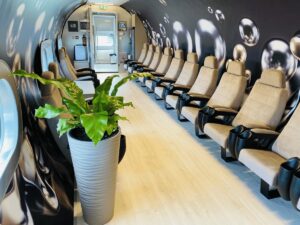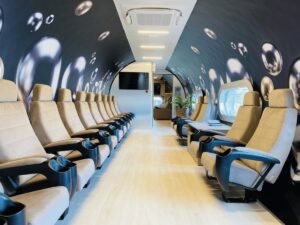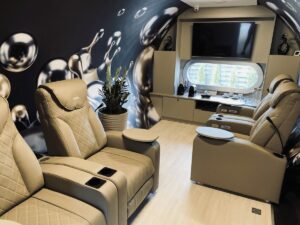Are you exploring advanced therapeutic solutions for your business offerings? Normobaric and hyperbaric chambers represent cutting-edge technology in the realm of therapeutic environments.
With years of expertise in the chamber technology industry, my insights draw upon a deep understanding of both normobaric and hyperbaric systems, making me a reliable source for this comparison.
Normobaric chambers simulate different altitudes to offer altitude training without the need to travel, while hyperbaric chambers utilize increased pressure to saturate the body with oxygen, promoting healing and recovery.
In this review, a deep dive into the specifics of each chamber type awaits, shedding light on operational principles, health benefits, and practical applications.
Let exploration begin!
1. The Physics Behind Pressure Chambers
Understanding the physics behind pressure chambers starts with the basics of gas laws and fluid dynamics. At the heart of it, these chambers manipulate the atmospheric pressure inside a sealed environment. This change in pressure can significantly affect the way gases dissolve in liquids, a principle crucial for their medical and performance-enhancing applications.
Now, let’s dive a little deeper. For example, when a person increases the pressure in a hyperbaric chamber, it allows more oxygen to dissolve into the bloodstream. This is due to henry’s law, which states that the amount of gas that can be dissolved in a liquid is directly proportional to the pressure of the gas above the liquid.
2. Normobaric Chambers Explored
Normobaric chambers operate under normal atmospheric pressure, offering a contrasting approach to hyperbaric therapy. Instead of increasing pressure, these chambers focus on delivering higher concentrations of oxygen in a controlled environment, aiding in recovery and wellness without the need for high-pressure conditions.
Specifications of Normobaric Chambers:
| Specification |
Details |
| Type |
Single Person / Multi Person |
| Pressure Rating |
Ambient atmospheric pressure |
| Oxygen Delivery |
Enhanced Oxygen levels (up to 30% O2) or Air mixture |
| Material |
Acrylic, Polycarbonate, or Composite materials |
| Chamber Diameter |
2 to 3 feet (single) / 4 to 6 feet (multi) |
| Chamber Length |
6 to 8 feet (single) / Variable (multi) |
| Door Type |
Sliding, Hinged, or Curtain |
| Internal Lighting |
LED or Fluorescent |
| Communication System |
Audio systems with microphones and speakers |
| Safety Features |
Emergency exit, Air filters |
| Monitoring Capabilities |
Oxygen level, Temperature, Humidity |
| Seating/Bedding |
Adjustable Seats or Benches |
| Certifications |
ISO, CE (varies by region) |
| Usage |
Therapy for altitude sickness, Performance enhancement, Research |
The specifications of normobaric chambers can vary significantly based on the manufacturer, intended use, and customizations. For instance, these chambers are often used in clinical research, athletic training, and therapeutic applications where controlled oxygen levels are beneficial but without the increased pressure found in hyperbaric environments.
3. Hyperbaric Chambers Unveiled
Hyperbaric chambers boost atmospheric pressure, enhancing the body’s oxygen absorption, which supports quicker healing of some health issues. Research from the National Library of Medicine highlights that diabetic foot ulcers, open wounds at the bottom of the foot, affect 15% of diabetes patients. This chamber is noted for its efficacy in this area, influencing various inflammatory and tissue repair parameters.
Specifications of Hyperbaric Chambers:
| Specification |
Details |
| Type |
Single Person / Multi Person |
| Pressure Rating |
Up to 6 atmospheres (typically 1.5 to 3 ATA) |
| Oxygen Delivery |
100% Oxygen or Air mixture |
| Material |
Steel, Acrylic, or Composite materials |
| Chamber Diameter |
2 to 3 feet (single) / 6 to 9 feet (multi) |
| Chamber Length |
7 to 9 feet (single) / Variable (multi) |
| Door Type |
Round, Hinged, or Rectangular |
| Internal Lighting |
LED or Fluorescent |
| Communication System |
Audio systems with microphones and speakers |
| Safety Features |
Emergency pressure release, Air filters |
| Monitoring Capabilities |
Pressure, Oxygen level, Internal conditions |
| Seating/Bedding |
Fixed Seats or Removable Stretchers |
| Certifications |
ASME, PVHO, FDA-approved (varies by region) |
| Usage |
Medical Treatments, Diving Decompression, etc. |
This table outlines the features and specifications of hyperbaric chambers, which can differ based on design and use. In addition, models vary with some offering enhancements for specific needs. Explore Oxygen-ark for more tailored options in hyperbaric solutions.
4. Normobaric vs Hyperbaric Chambers: A Side-by-Side Comparison
After exploring the capabilities and advancements of hyperbaric chambers, it’s beneficial to compare these with normobaric chambers to understand their differences fully. Each type of chamber offers unique features and applications. Here are detailed comparisons across five specific aspects:
Operating Pressure
Normobaric chambers operate at or near atmospheric pressure, essentially mimicking the air pressure found at sea level. Hyperbaric chambers, in contrast, increase the atmospheric pressure to levels higher than sea level, which can be up to three times normal air pressure.

Medical Applications
Normobaric chambers are used primarily for altitude training and acclimatization, simulating higher altitudes while maintaining normal oxygen levels. Hyperbaric chambers on the other hand are beneficial in medical treatments, enhancing oxygen delivery to tissues to accelerate healing processes in conditions like carbon monoxide poisoning and diabetic foot ulcers.

Oxygen Concentration
In normobaric chambers, the oxygen concentration remains similar to that of the surrounding environment, about 21%. While Oxygen-ark hyperbaric chambers increase oxygen concentration significantly, which can reach nearly 100%, enhancing the therapeutic effects.

5. 3 Factors to Consider When Choosing Between Normobaric and Hyperbaric Chambers
After exploring the comparative aspects of normobaric and hyperbaric chambers, it becomes clear that selecting the appropriate chamber involves considering a variety of critical factors. Here are some key considerations that should guide decision-making:
#1 Intended Use and Therapeutic Goals
The choice between normobaric and hyperbaric chambers should be based on the specific health objectives. Hyperbaric chambers are effective for conditions that benefit from increased oxygen levels in the blood, such as wound healing, decompression sickness, and serious infections. Normobaric chambers, providing oxygen at normal atmospheric pressure, are generally used for less critical oxygen supplementation and altitude training.
#2 Safety and Risk Factors
Safety is a paramount concern when selecting an oxygen therapy chamber. Hyperbaric chambers pose higher risks due to the increased pressure and oxygen concentration, which can lead to complications such as barotrauma or oxygen toxicity if not managed properly. Normobaric chambers are generally considered safer, as they operate at normal atmospheric pressures and involve lower concentrations of oxygen.
#3 Availability and Accessibility
Finally, hyperbaric chambers are primarily found in specialized medical centers and typically require an appointment, which may not suit everyone’s schedule. Normobaric chambers, being less complex, can often be used at home or in a wider variety of settings, offering more flexibility and easier access.
Dive Deeper Into Our Resources
For some insightful reads, we’ve curated a list of recommended articles just for you:
Still haven’t found what you’re looking for? Don’t hesitate to contact us. We’re available around the clock to assist you.
Conclusion
Exploring the differences between normobaric and hyperbaric chambers offers valuable insights for making informed decisions tailored to the business and client needs. This guide aims to simplify complex concepts and spotlight key considerations that matter most.
For businesses seeking a reliable normobaric and hyperbaric chamber manufacturer, Oxygen-ark offers expertly crafted solutions tailored to your needs. Explore how goals can be supported—contact us today.



